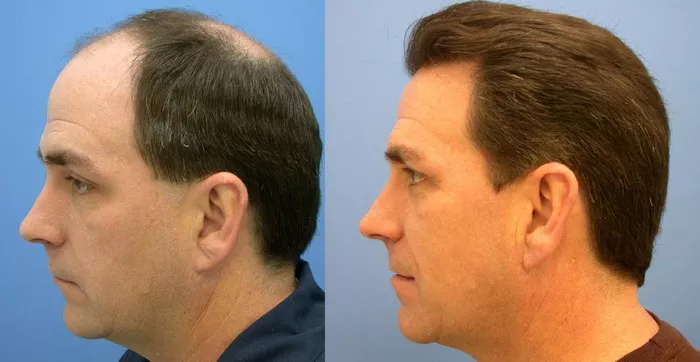The quest for a full head of hair often leads individuals to consider hair transplant procedures. While the restoration of hair is the primary goal, concerns about the appearance of transplanted hair, including its potential to turn gray, can arise. In this article, we will delve into the question: Does transplanted hair go gray? We will explore the science behind hair pigmentation, the factors that influence graying, and what individuals can expect from their transplanted hair over time.
Understanding Hair Pigmentation
Hair color is determined by the presence and amount of a pigment called melanin. Melanin is produced by specialized cells known as melanocytes located in hair follicles. Two main types of melanin contribute to hair color: eumelanin, which is responsible for darker colors, and pheomelanin, which contributes to lighter colors.
Does Heredity Affect Hair Color and When Gray Hair Appears?
Heredity plays a significant role in determining hair color and the timing of gray hair appearance. Hair color is primarily determined by the amount and type of melanin (pigment) produced by hair follicles. Genes inherited from parents influence the production of melanin, which leads to the wide range of hair colors observed.
The timing of gray hair appearance, known as canities, is also influenced by genetics. If your parents or grandparents experienced early graying, there’s a higher likelihood that you might as well. Other factors like ethnicity, stress, and certain medical conditions can also contribute.
Does Transplanted Hair Go Gray?
Transplanted hair can go gray over time if the original hair follicles were genetically programmed to produce gray hair. Hair color is determined by genetics and the amount of melanin produced in hair follicles. Even if transplanted to a new area, the follicles will continue to produce hair with their original genetic characteristics, including color. However, the transplanted hair will initially retain its original color and might take some time to fully transition to gray. It’s important to have realistic expectations and discuss potential outcomes with your hair transplant surgeon before the procedure.
Factors Influencing Graying
Graying of hair is influenced by a combination of genetic, environmental, and physiological factors. Here are some key contributors:
1. Genetics:
As mentioned earlier, genetics is a primary factor influencing graying. If your family members experienced early gray hair, it’s likely that you may also experience a similar pattern.
2. Age:
Age is a significant contributor to graying. As individuals age, the production of melanin in the hair follicles gradually decreases, leading to a reduction in pigment and the appearance of gray hair.
3. Oxidative Stress:
Oxidative stress, caused by an imbalance between free radicals and the body’s antioxidant defenses, can accelerate the graying process. Factors such as smoking, poor diet, and exposure to environmental pollutants can contribute to oxidative stress.
4. Ethnicity:
Different ethnic groups experience graying at varying rates. Caucasians tend to gray earlier, while Asians and Africans typically gray later.
5. Smoking:
Some studies suggest a link between smoking and premature graying.
Managing Gray Hair After Transplantation
Gray hair is a natural part of the aging process, and transplanted hair is not exempt from this process. Embracing the change in hair color can be a positive step toward accepting the natural progression of time. For individuals who wish to maintain their original hair color, hair dye is a viable option. Consult a professional stylist to ensure that the dyeing process is performed safely and yields natural-looking results.
Conclusion
In conclusion, transplanted hair is subject to the same biological processes as native hair. The potential for transplanted hair to go gray is influenced by genetics, age, and oxidative stress. While transplanted hair can enhance one’s appearance, it may still undergo the graying process over time. Embracing the changes that come with age and considering personal preferences for managing hair color are important steps in the journey to self-confidence and acceptance.


